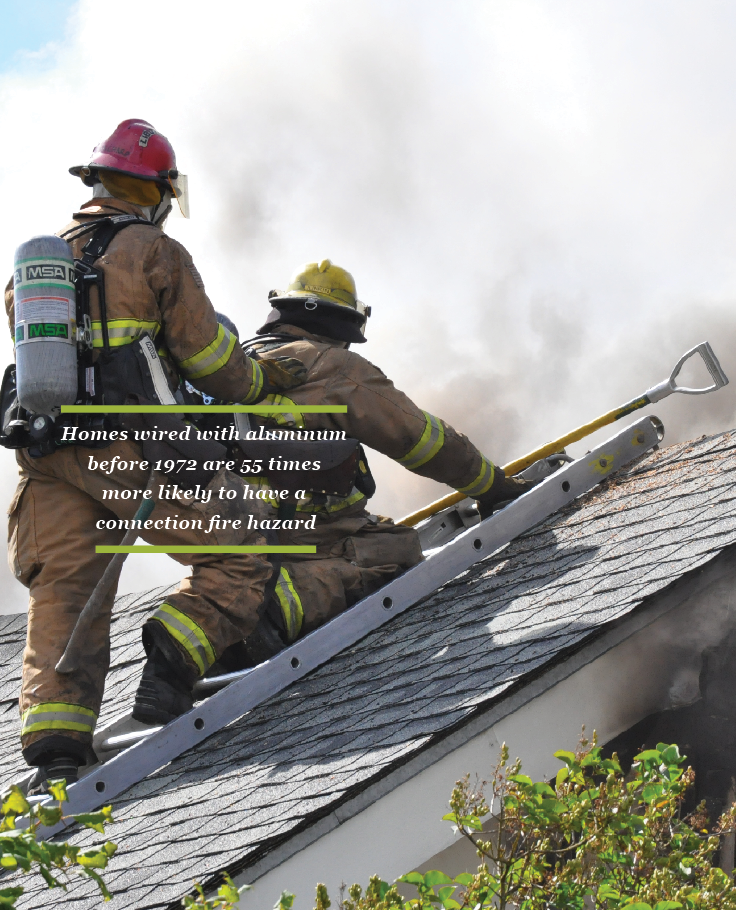
Electrical fires are one of the
leading causes of residential fires in the United States. In 2012 alone, an estimated 20,200 electrical fires occurred causing 201 deaths, 900 injuries and $814 million dollars in damage.
Less well known is the specific hazards aluminum wiring represent.
Homes wired with aluminum manufactured before 1972 are 55 times more likely to have a connection reach fire hazard condition than homes wired with copper.
Due to the rapidly increasing cost of copper at the time, an estimated 1.5 million homes were wired with aluminum between 1965 and 1973.
Why is aluminum wiring a problem?
Compared to copper, aluminum is more brittle, deforms more easily and oxidizes more readily. It also has a greater coefficient of expansion, meaning that it expands more when exposed to heat (30% more than copper). These problems can lead to loose connections on receptacles, switches, and cable connections, resulting in arcing and subsequent fires.
Potential warning signs of failing aluminum wired connections are hot faceplates; the smell of burning plastics at outlets or switches; circuits that do not work; or flickering lights.
How do know if I have aluminum wiring?
If your home was built or remodeled between 1965 and 1973 you can perform a visual check of the plastic sheathing on the cables. Wiring is often visible in unfinished basements, attics or garages. The word aluminum or ‘AL’ may be written on one side of the wiring. You can also look at the exposed wires in outlets or switches; the color of the aluminum wire is silver rather than copper.
How do I fix the problem?
The
Consumer Product Safety Commission (CPSC) has researched the fire problem associated with aluminum wiring and recommends three permanent repairs.
- Rewire the entire home
- Professionally install COPALUM crimp connectors
- Professionally install AlumiConn connectors
If you have additional questions, please contact our Fire Prevention Division by calling (253) 591-5740 or sending an email.
Resources